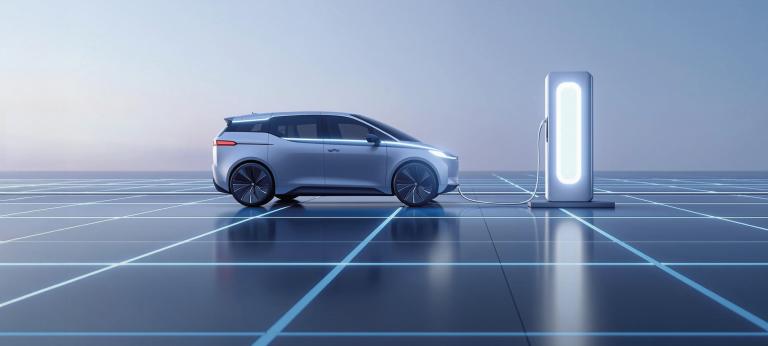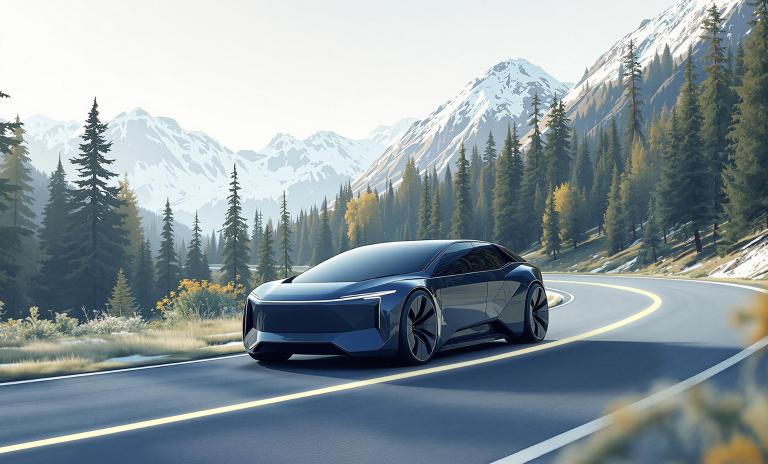EV Charging Index 2025: Steady progress
Despite tough market conditions, global EV use and charging infrastructure showed continued steady growth in 2024. Learn more in Roland Berger’s latest EV Charging Index.


By Erin Sowerby and Elena Yakushkina
In our latest EV Charging Index, the United States moved up a place to third, thanks mainly to its large EV market and high user satisfaction. Canada is also increasingly strong in these areas and cemented its place in the top half by rising to 11th. Lastly, Mexico is still a nascent EV market but is showing encouraging signs of growth. It makes its Index debut, ranking 25th of 33 markets.

Despite a decline in the growth rate, EV sales volumes continued to expand across the region, with more than 1.9 million new passenger-car EVs sold in 2024, up from 1.6 million in 2023. Key drivers include the availability of new models and reduced pricing as well as rebates from the Inflation Reduction Act for US-based users.
In terms of sales penetration, it was a consolidatory year for the US market, with the sales penetration rate of EVs creeping up from 10% to 11%. Canada fared better, with the EV sales penetration rate jumping from 9% to 15%. Meanwhile, Mexico’s sales penetration doubled, albeit from just 1% to 2%, but the Mexican market is expected to benefit from an influx of affordable Chinese EVs. Overall, the region is still some way behind the global and European averages in this metric (both 25%).
Importantly, the November 2024 elections results in the United States have introduced uncertainty around future sales growth for EVs, with a marked shift away from sustainability-focused policies, doing away with rebates for electric vehicles, and taking steps to eliminate the CARB waiver and loosen national emissions standards. The turbulent tariff situation is also impacting OEMs, and while we expect EV sales growth to continue, the pace will slow and the share of plug-in hybrid electric vehicles (PHEVs) will likely rise.
"Lower operating costs compared with ICE vehicles is now North America’s number one EV purchase driver – ahead of environmental protection."
Not so long ago, environmental protection was the main driver of EV adoption, but on a global level it is now matched by the perception that EVs offer lower usage and maintenance costs compared with ICE vehicles.
Indeed, in North America, operating cost is now the number one factor, with 54% of regional respondents naming it, ahead of 48% for environmental protection. This is particularly true in Canada, where 59% named cost as a key reason for EV adoption, well ahead of the global average of 47%. By comparison, environmental protection was named by just 44% of users in Canada. US users see it more evenly (50% cost vs. 49% environment), while both factors score highly in Mexico, where economic subsidies are less of a driver.
Part of the reason North American EV drivers place greater emphasis on operating costs is their frequency of use: 53% of BEV drivers in the region use their vehicle (almost) every day – more than the global average of 46%.
Private home charging is particularly prevalent in North America: just over three-quarters (78%) of survey respondents report having a private charging point – well above the global average of 64%. EV drivers in North America report a higher-than-average proportion of their charging at home: 65% of miles are covered by home charging, comfortably above the global average of 55%.
"North America has the highest proportion of EV drivers who are very satisfied with the overall charging experience."
There is room for improvement with public charging infrastructure across the region. In the United States, the ratio of vehicles to public charging points is particularly high (31) – much higher than the global average of 11 and European average of 14. Canada scores slightly better (25), with Mexico coming in at 15, partly due to its small EV parc.
Growth in North American public charging points was modest, likely reflecting political headwinds and uncertainty in the United States as well as the broader challenges faced by some charging point operators. Total charging points increased by a little over 20% during 2024, in line with 2023 but short of 2024 growth rates in Europe and Asia-Pacific.
Growth among faster DC public charging points was more impressive, registering 30% during 2024, meaning 25% of North American charging points are now DC. Nevertheless, this is still some way behind the global average of 39%, which is driven by particularly high ratios in market-leader China and fast-growing areas such as Australia and the Middle East.
While the region’s public charging infrastructure has room for improvement, user perception of charging in North America is relatively high.
Almost two-thirds of respondents (64%) say public charging speeds are generally fast enough – above the global average of 60%. The US is the regional leader here, with 66%, ahead of Canada (63%) and Mexico (58%).
The convenience of public charging continues to improve, with 82% of North American respondents saying charging has become more convenient over the last six months. This is higher than the global average of 76% and some way above the European average of 70%. Unsurprisingly, Mexico scores the highest here in the region as it starts to expand its limited public charging network (87%).
Meanwhile, dissatisfaction with charging costs is falling in the United States and Mexico but rose slightly in Canada.
In terms of overall charging experience – both private and public – 53% of North American EV drivers report feeling satisfied or very satisfied, which is higher than any other region. The United States leads the region with 54%, ahead of Canada (51%) and Mexico (48%).
While the market remains challenging for charging point operators, owners of public charging facilities reported increased utilization, boosted by rideshare agreements, contracts with EV manufacturers and subscriptions. The market continues to shift to the NACS – formerly known as the Tesla standard – for both new and existing chargers. This means Tesla and other vehicles can share charging stations, where before there was very little crossover.
Profitability continues to prove elusive for charging point operators. Meanwhile, in the US, government funding through the NEVI program had been frozen then released, causing uncertainty. Tax incentives for charging facilities, known as the Alternative Fuel Vehicle Refueling Property Credit, will now sunset mid-year 2026, further imperiling project economics.
Register now to to discover the latest insights, emerging trends and upcoming challenges in the EV and EV charging markets.